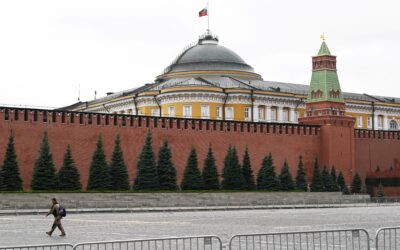
Russia’s Response to U.S. Aid: Shrugs, Disinformation and Warnings of Nuclear War
SUBSCRIBER+ EXCLUSIVE REPORTING — Russia’s reaction to the new infusion of U.S. aid for Ukraine has ranged from shrugs to fury, from warnings of nuclear […] More
OPINION — U.S. Special Operations Command (SOCOM), which has grown to become the world’s top counterterrorism force over the past 20 years, is now facing some change in mission and reductions in personnel under the Biden administration’s National Security Strategy.
During that period, SOCOM grew from about 45,700 military and civilian personnel in 2001 to about 73,900 in fiscal year 2021.
SOCOM Commander General Richard Clarke and Assistant Secretary of Defense for Special Operations Christopher Maier announced last April in their Vision and Strategy statement, Special Operations Forces (SOF) must evolve “from the world’s premier Counter Terrorism (CT) force into one optimally suited to support the Joint Force and the Nation as part of integrated deterrence.”
With China and Russia as major power competitors, “Over the next 10 years, we will modernize SOF, pioneer dynamic and unorthodox approaches (including the full toolkit associated with irregular warfare), leverage emerging technologies to mitigate adversarial activities by China, and create asymmetric advantages for current and future conflict,” they wrote.
They also forecast that “Given anticipated budget reductions, our budget proposals will reflect deliberate efforts to find efficiencies in our processes and procedures.”
Ironically, SOF work in line with the new strategy had already begun eight years ago in Ukraine, while CT was still the main focus of SOCOM.
“Our special-operations forces helped develop and work with other allies to come into Ukraine and build up the Ukrainian special operations forces,” Gen. Clarke, told members of the House Armed Services Committee at a hearing in April.
Since that training began in 2014, Ukrainian forces “doubled in size,” Clarke said, and “created a solid military force with a robust, non-commissioned corps. It also created a cadre of potential recruits for Ukrainian special operations units, helping those units not only get better but bigger.”
However, as a Government Accountability Office (GAO) report released last Wednesday showed, SOCOM’s new strategy focus has had an impact on its current operations.
During calendar year 2021, the GAO found, SOCOM had 28 action units or task forces operating around the world, primarily in the Middle East (12) and Africa (6). And between 2018 and 2021, it had terminated 27 SOF task forces and transitioned another 30 to other missions.
But the GAO report is a sharp reminder that SOCOM, and thus the U.S., continue to have American military units in active combat in several places around the world.
The Cipher Brief hosts expert-level briefings on national security issues for Subscriber+Members that help provide context around today’s national security issues and what they mean for business. Upgrade your status to Subscriber+ today.
For example, last Thursday, U.S. Combined Special Ops Joint Task Force-Levant (SOJTF-Levant) carried out two major assaults in Northern Syria that killed three Islamic State (ISIS) terrorist leaders, according to a U.S. Central Command (CENTCOM) press release.
Last week’s GAO report notes that back in 2020, CENTCOM had transitioned SOJTF-Operation Inherent Resolve, which had been directed at the ISIS terrorist group, into SOJTF-Levant, which has been carrying out military operations in Iraq and Syria.
Headquartered in Kuwait, SOJTF-Levant also exercises command of SOF units in Jordan and Lebanon. Recently, SOJTF-Levant reduced its personnel from about 270 to 230, according to the GAO.
In Afghanistan, according to the GAO, SOJTF-Afghanistan ended its mission in August 2021, with its personnel then becoming the nucleus of Over-The-Horizon/Counterterrorism Task Force established in January 2022, with responsibility for Afghanistan as well as Central and South Asia nations.
The July 31, 2022, U.S. drone attack that killed Al-Qaeda Leader Ayman al-Zawahiri was the work of the Over-The-Horizon/Counterterrorism Task Force. It proved the U.S. continues to have intelligence and military power in the area.
In Africa, the GAO lists six task forces but only mentions one, the Special Operations Task Force – North/West Africa which it describes as “conducting counterterrorism operations in North and West Africa.”
However, beyond that one group there also are Special Operations Task Force East Africa, Joint Special Operations Air Component Africa, Naval Special Warfare Unit Ten, SOCAFRICA Signal Detachment and Joint Special Operations Task Force-Somalia.
Last May, President Biden authorized an increase of some 400 SOF personnel for Somalia which has been fighting against Al Shabab terrorists for years. By doing so, Biden reversed a withdrawal of some 700 American military during the Trump Administration. Then Pentagon spokesman John Kirby said, “It is not a deployment. This is a change in posture. It’s about putting troops back into Somalia on a persistent basis. It’s not a deployment with an end date.”
This past August 14, the SOJTF-Somalia in coordination with the Somalian government, conducted an air strike against al-Shabaab terrorists who were attacking Somali Army units near Teedaan, Somalia. Some 13 terrorists were either killed or wounded.
Just over a week ago, U.S. Africa Command said it carried out another air strike on October 1, near Jilib, southwest of the Somali capital of Mogadishu. The strike, the Command said, killed Abdullahi Nadir, al-Shabaab’s chief prosecutor, who it said had been in line to replace the group’s ailing leader, Ahmed Diriye.
In the Indo-Pacific Command there are four Special Operations Task Forces according to the GAO report. One is SOJTF-511, headquartered in Okinawa with a mission to counter ISIS expansion and deny terrorists safe haven in the Philippines.
SOJTF-511.2, is a team of U.S. servicemen based at Camp Don Basilio Navarro, headquarters of the Philippine Army’s Western Mindanao Command. The small team is what remains of what used to be a 600-personnel contingent of military advisers and trainers deployed from 2002 to 2015 under Operation Enduring Freedom-Philippines to go after the then Al-Qaeda-linked Abu Sayyaf group.
U.S. Special Operations Command created a task force in the Pacific region to work with allies there to thwart China’s information operations, the commander told lawmakers Thursday.
Another Indo-Pacific SOJTF team will be focused on information and influence operations in the Pacific theater because of China’s growing capabilities. SOCOM’s Gen. Clarke told Congress last summer that with the new task force “we actually are able to tamp down some of the disinformation that they [China] continuously sow.”
Special Operations Command Korea, according to its own website, is a SOJTF-in-waiting. Its role is primarily to form a SOJTF on the outbreak of war on the Korean Peninsula. “If the armistice fails, SOCKOR and ROK SWC will combine to establish the Combined Special Operations Component Command Korea under the Combined Forces Command,” according to its website. Meanwhile it carries on training exercises.
Gen. Clarke and Assistant Secretary Maier announced closed their April Vision and Strategy statement saying: “Just as our adversaries adapt to and shape the strategic environment, SOF will continue to evolve in order to fulfill the vision of creating strategic, asymmetric advantages for the nation in integrated deterrence, crisis, and conflict.”
SOCOM is still carrying on the war on terrorism with only slight public notice. Its work with allies in training Ukraine’s fighting forces may result in shaping conventional warfare in coming years. With that kind of record the American public should look forward to seeing what Special Forces leadership and personnel come up with in the future.
Read more expert-driven national security insight, perspective and analysis in The Cipher Brief
Related Articles

SUBSCRIBER+ EXCLUSIVE REPORTING — Russia’s reaction to the new infusion of U.S. aid for Ukraine has ranged from shrugs to fury, from warnings of nuclear […] More
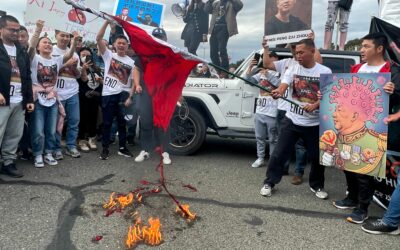
SUBSCRIBER+ EXCLUSIVE REPORTING — When Chinese President Xi Jinping came to San Francisco last November to meet with President Joe Biden, Chinese pro-democracy activists in […] More
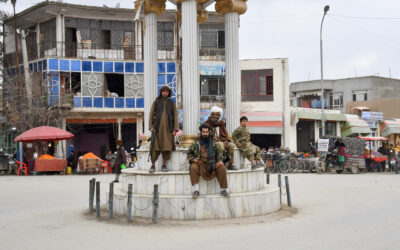
SUBSCRIBER+EXCLUSIVE EXPERT PERSPECTIVE — More than two years after its withdrawal from Afghanistan, the U.S. still does not have a clear way forward in the […] More
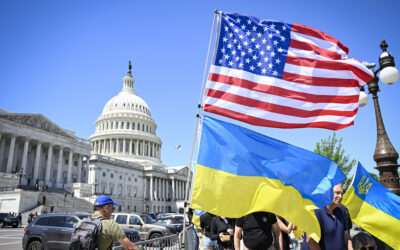
SUBSCRIBER+ EXCLUSIVE REPORTING — Ukrainians greeted Saturday’s long-awaited House passage of $60.8 billion in aid with justifiable jubilation. For months, their soldiers, civilians, and political […] More
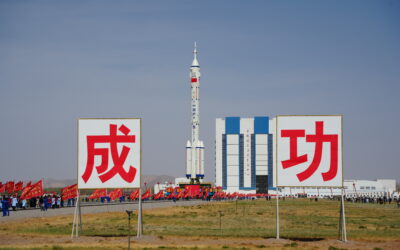
SUBSCRIBER+ EXCLUSIVE REPORTING — A race for control of space is underway, and just as on earth, the U.S. and China are the top competitors. […] More

SUBSCRIBER+ EXCLUSIVE REPORTING — For nearly a week, the Middle East and much of the world were on a knife’s edge, waiting for a promised […] More
Search